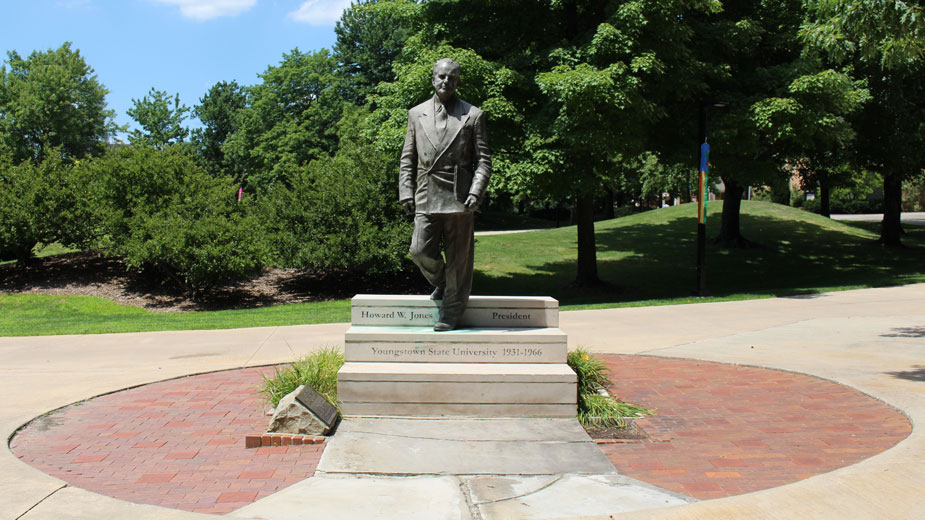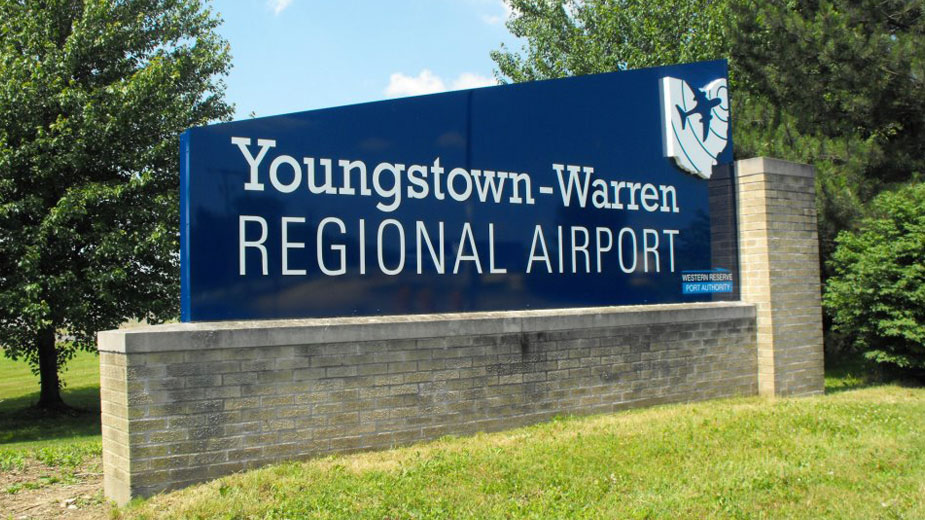Howard Jones’ Legacy Is the YSU Foundation
YOUNGSTOWN, Ohio — Marilyn Chuey remembers when the Youngstown State University Foundation was set up a half century ago.
She should. She’s the daughter of Howard W. Jones, the man who negotiated its creation with the governor of Ohio, James A. Rhodes, along with Youngstown University becoming Youngstown State University.
When Chuey met Rhodes, the governor informed her that her father, then president of Youngstown University, “knows figures,” she recalls. “He knows figures.”
And when she hears people today discuss the good the foundation does, “It’s almost as if they’re talking about my father,” she says.
Next month, Marilyn Chuey and her husband, Phillip, who was an accountant for the foundation in its early days, will be recognized at the trustees’ dinner to celebrate its 50th anniversary.
“Governor Rhodes and Dad worked together,” Chuey says. “Governor Rhodes agreed he could keep the money for scholarships, that [the foundation and its assets] would remain independent of the university.”
While tied closely to YSU, the foundation, born as “The Youngstown Educational Foundation,” remains independent. Its staff of 11, soon to be 13, are “employees of the foundation, not the university,” its president, Paul McFadden, emphasizes. “We pay rent” for the space leased on the first floor of Melnick Hall.
“We provide a service to the university. For free,” he elaborates, stressing its legal status as a 501(c)(3) entity. “Our counsel said, ‘If you accept compensation [as employees of YSU or to perform university business], you’re accepting public money.’ ”
Before succeeding Reid Schmutz as president of the foundation, McFadden was YSU’s chief development officer. The vice president of the foundation, Heather Chunn, also raised funds as a development officer.
The $12 million Jones persuaded Rhodes to exclude from the assets of YSU have grown to $210 million, says McFadden, only the fourth president of the foundation, despite it’s having provided millions of dollars in financial aid toward the tuition of students numbering in the thousands.
The foundation holds more than 600 endowments and awards more than $8.1 million in scholarship aid each year to YSU students, McFadden says.
In the new offices of the foundation in Melnick Hall, McFadden sits behind the desk Jones used when he was president of Youngstown College and Youngstown University as well as the first president of the foundation. Also in his office is Jones’ cabinet, a tall piece of furniture on legs with flowers painted on the doors.
The painting technique, says retired foundation staff member Elinor Zedaker, is “rosemaling,” a technique she learned about in an art class.
The freehand technique originated in Norway and is tedious and time-consuming, she says. Rosemaling, or “rose designing,” is Norwegian folk art with bold flourishes and delicate scrolls in bright colors.
Jones stepped down as president of Youngstown University in 1966 and as head of the foundation in 1975.
McFadden, a standout kicker for the Penguins’ football team in the 1980s, completed his baccalaureate in history after a six-year career in the NFL. Deeply interested in the history of his alma mater, he has conducted his own research into its past and collected memorabilia that dates to the 1930s.
He learned, for example, that the original colors of Youngstown College were red and gold, not red and white. Because of the shortage of gold ink during World War II, white replaced gold used on the numbers of athletics uniforms. Despite ample supplies of gold ink after 1945, Youngstown College kept its red and white colors.
When Jim Tressel assumed the presidency of YSU in 2014, he turned to McFadden to succeed Schmutz and charged the foundation with raising funds for YSU in addition to managing its assets. The consolidation led McFadden to expand its staff to 11 from four and “saved the university $1 million a year by not having a director of development,” McFadden says, as well as support staff.
The foundation staff is diverse, consisting of former public school teachers, a principal, sales executives and corporate recruiters.
Chunn, twice a graduate of YSU (B.S., ’98, in marketing, MBA 2003) worked in the private sector as a media buyer and planner before joining YSU’s former office of development.
Their expanded mission required that they leave Alumni House just north of the Butler Institute of American Art. After looking for a new site, the foundation crossed Wick Avenue to just north of the YSU president’s residence and chose Melnick Hall. (WYSU-FM radio studios occupy the second floor.)
McFadden and Chunn worked with Strollo Architects on the layout of the first floor, which has space for more staff.
While the assets of the foundation exceed $200 million, its board adopted a policy Oct. 17, 2012, of disbursing only the income those assets earn, never touching the principal, and hiring an investments manager to guide the growth of those assets. The board does not see that policy as limiting foundation support of YSU or unnecessarily restricting the distribution or diversification of assets, McFadden says.
The power of endowment, which he brings up as he meets with alumni and others who would be benefactors of YSU, is immense and long lasting.
He cites “The Original 14,” the 14 scholarships transferred from Youngstown University to the Youngstown Educational Foundation, today worth 5.5 times their original value despite having funded the tuition of many students. Last year they paid for the tuition of 26 YSU students.
Three examples:
- The Clara Hincy scholarship, funded with $14,715 Jan. 17, 1963, had a value last May 31 just $5 short of $97,000.
- The Katherine McDowell Wilson scholarship, funded with $40,000 Aug. 25, 1958, was valued at $172,846.
- And the second-oldest, the Tom Pemberton scholarship, funded with $12,000 Dec. 3, 1956, was valued at $63,508.
Pictured: Howard Jones still stands tall on the YSU campus.
Copyright 2024 The Business Journal, Youngstown, Ohio.



